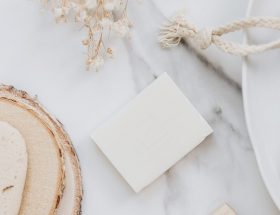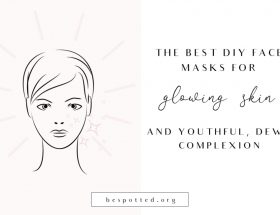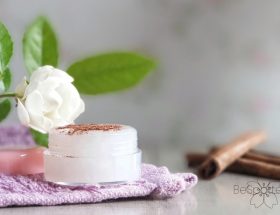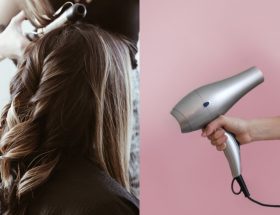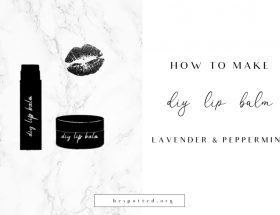This post may contain affiliate links. Any sales made through such links will reward me a small commission – at no extra cost for you!
Skin slugging may sound like a new beauty trend to try out. It seems to be taking social media by storm and you can find it recommended both by beauty bloggers and skin professionals.
However, even though the name for it is new, the technique itself is not. It is a skincare step that actually makes a lot of sense and therefore has been used by dermatologists for years.
So, here’s what slugging in skincare actually means, why it is important and how this easy step can truly improve the condition of your skin…
What Exactly Is Skin Slugging?
Despite its name, skincare slugging has nothing to do with snail enzymes. It more refers to the look your face gets when you apply a thin layer of a petrolatum-based product – shiny, gooey and slimy, as if a snail has left its trail all over it.
Sounds gross? Just keep your mind on the goal – the softest ever, well protected and super hydrated skin when you wake up.
Skin slugging actually refers to using a highly occlusive petrolatum product (most often Vaseline, CeraVe Healing Ointment or Aquaphor Healing Ointment) as the last step of your nighttime skincare routine. And what occlusive products do is create a practically impenetrable protective layer on the top of your skin.
This layer reinforces your skin’s protective barrier. It locks in all the moisture that would be lost during the night, keeping your skin hydrated, plump and supple. It can also somewhat increase the strength of the products you’ve applied underneath it.
Slugging can be used on the whole face, especially if you have dry skin or during the winter months. Or you can use a more targeted approach and treat only areas where you often notice dryness, such as lips, chin, around your nose, under eyes, and even elbows, knees and heels.
Though some people might be worried about using petroleum jelly on their face (we’ve all heard those scary stories of how toxic and comedogenic petrolatum can be), you actually have nothing to worry about. Cosmetic-grade petrolatum is completely safe to use on face, according to dermatologists and it is even approved by FDA as a “skin protectant.”
The Benefits of Slugging For Your Skin
Your skin loves hydration, so anything that helps keep that water in is your skin’s new best friend. Well hydrated skin is plump, soft, smooth and youthful.
It is a difference that can help your skin 15 years from now to better deal with aging. But it is also something you can notice right away – in slightly less pronounced fine lines and a slightly brighter glow.
Unlike your regular moisturizer, petrolatum products are way more occlusive. That means that unlike your face cream, petroleum jelly can truly make sure all the water stays in your skin all night long.
However, these products don’t supply your skin with moisture. That is why using a petrolatum product over a thinner hydrating product makes such a powerful combination. The hydrator gets the moisture to your skin, the occlusive makes sure it says there.
Especially if you have dry, dehydrated or mature skin, you will love this technique. Many people get truly surprised by how velvety-smooth their skin starts to feel after a few days of slugging.
It feels better moisturized in the morning. It looks more hydrated the whole following day. You can say goodbye to the tight, itchy feeling and dull complexion.
Slugging also helps your skin heal faster. If your skin barrier is compromised because of the harsh winter weather or if you’ve over-exfoliated it, putting an occlusive layer over your other products at night can help your skin recover faster.
Part of the lipid barrier’s job is to keep the moisture in. But the other part is to protect your skin against negative external influences.
By slugging your skin, you help repair and reinforce the barrier’s functioning. Ultimately, that means less damage and a healthy, youthful skin for much longer.
How to Include Slugging Into Your Skincare Routine
The point of using petrolatum is to create a seal that will keep all the good stuff in your skin. Just keep in mind that these products will keep all the bad and irritating stuff in, too.
Step 1
Start by cleansing your skin as well as you possibly can. Any trace of dirt, bacteria, sunscreen or makeup left will be trapped on your skin during the night. This doesn’t mean you should strip your skin or use harsh cleansers. Just make sure it’s really clean.
Step 2
After the cleansing, though some people recommend using only petroleum jelly without a hydrating product underneath it, for many of us that would be unimaginable. My skin, for example, tends to get dehydrated and using only Vaseline wouldn’t help at all.
So, the best step 2 would be a ton of hydration, to supply the skin with water that petrolatum can seal in later. You can supply that moisture by using a mist or a serum that contains humectants, such as hyaluronic acid, glycerin, honey or aloe vera.
Step 3
Now, the third step of skincare slugging – it can be debated if it really is necessary or not. But I certainly like to add a thin layer of a lightweight face cream. My skin just feels better when I do.
Step 4
The last step would be your occlusive. CeraVe, Vaseline or Aquaphor each have their fans, but any would work. Apply just a thin layer – a pea-size amount should be enough. And not everyone should apply an occlusive to a whole face – use it only in the areas that tend to get dry.
Maybe Skip Skin Slugging If…
As with everything skincare related, slugging is not a one-size-fits-all solution. Though its benefits for certain skin types are undeniable, if your skin is not a good fit for it, it might do more harm than good.
This is because petrolatum used for skincare slugging pretty much works by trapping everything that’s underneath it. And even though petrolatum itself doesn’t clog your pores, it will trap things that may clog them, such as sebum, dead skin cells and bacteria.
That is why face slugging is not recommended for people who have oily or acne prone skin. You may also want to avoid this technique if you sweat during the night. And make sure to double check all the products you use underneath your slugging layer and if any of them might be comedogenic.
However, even people with acne or oily skin can use targeted slugging. For example, you can use petrolatum to seal moisture in your lips or in your under-eye area. Or if you have combination skin, you can slug on your dry areas and leave your T-zone alone.
You get it? It is not so much about running away screaming from skin slugging if you have acne. It is just about using this technique the way you can benefit from the most. And only in the areas where your skin really needs it.
Another thing to keep in mind – it might be better to skip slugging on the nights when you use your retinol or chemical exfoliators. As amazing as these products can be, they also have a potential to irritate the skin. And occlusives increase this risk by a lot.








